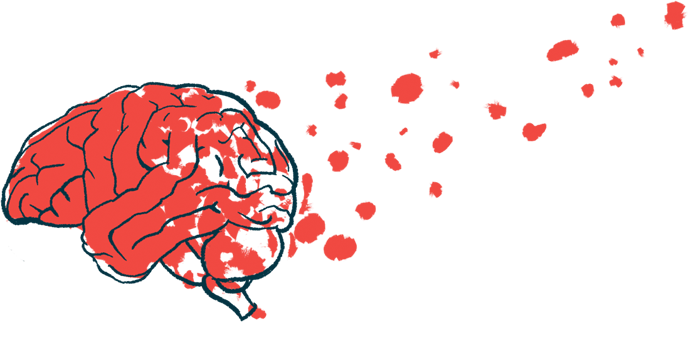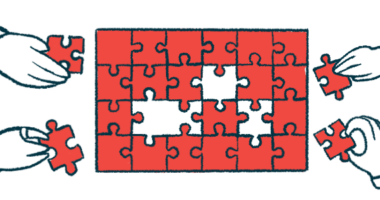Portable Neurostimulator Safe With Home Use, Alzheimer’s Trial Finds

Use of a portable neurostimulator by Actipulse Neuroscience that delivers fast gamma waves to particular brain regions as a way to stop or slow Alzheimer’s disease was found to be safe in a pilot clinical trial.
Another trial focused on testing the device’s effectiveness is expected to open early next year.
“We are extremely happy with the results from this safety trial and are eager to start the efficacy study with the hope of finding a new method to slow disease progression,” Adrien Châtillon, CEO and co-founder of Actipulse Neuroscience, said in a press release.
Trial results were detailed in the study “Use of Fast Gamma Magnetic Stimulation Over the Left Prefrontal Dorsolateral Cortex for the Treatment of MCI and Mild Alzheimer’s Disease: A Double-Blind, Randomized, Sham-Controlled, Pilot Study,” published in Frontiers in Neurology.
Changes in brain waves — the synchronized, electrical pulses used by nerve cells to communicate with each other — and particularly in the gamma frequency are known in people with Alzheimer’s and other neurodegenerative diseases.
Gamma brain waves, which are subdivided in slow (range between 25-60 hertz) and fast oscillations (60–135Hz), are involved in different aspects of cognition, such as working memory or attention.
In mouse models of Alzheimer’s as well as in patients, restoring gamma waves has been shown to lessen cognitive symptoms, inflammation, and amyloid deposition, an Alzheimer’s hallmark.
However, these studies used slow gamma waves, although fast gamma waves correlate with working memory in humans. As such, the “possible effects of fast gamma-restoring strategies” remain unexplored, the researchers wrote.
Actipulse Neuroscience reports that its non-invasive and wearable headset delivers fast gamma waves directly to the skull via its Fast Gamma Magnetic Stimulation (FGMS) technology. Its transcranial magnetic stimulation is also based on previously developed and FDA-approved technology.
Particularly, the device is able to apply high-frequency and low-intensity magnetic pulses at fast-gamma frequencies directly to the skull.
The pilot clinical trial (NCT03983655) enrolled 34 adults (age 65 and older), with mild cognitive impairment (MCI) or mild Alzheimer’s disease at a single site in Mexico.
Participants were randomly assigned to twice daily sessions of FGMS (17 patients; mean age of 80.47) or to a sham procedure (17 patients; mean age of 82.24) for six months.
The magnetic fields stimulated the left prefrontal dorsolateral cortex, a brain region important for working memory. Similar approaches targeting this region has had positive outcomes in previous MCI and Alzheimer’s studies.
Patients were able to use the portable headset at their home without supervision. The device is equipped with a wireless sensor, allowing researchers to evaluate treatment compliance.
“An important finding is that it is feasible to apply FGMS for a prolonged period (twice daily for 6 months) directly from the house of the patient,” the researchers wrote. “As only three subjects in the active FGMS and one in the sham FGMS did not complete the prespecified 80% of sessions, current results show that long-term application of FGMS directly from home is feasible and has a high compliance rate.”
The study’s main goal was to assess the proportion of patients with adverse side effects during the six months.
Secondary goals included evidence of changes in cognitive activity, daily living abilities, and depression.
Side effects were reported in four patients in the FGMS group (23.52%) and one in the sham group (5.88%).
The most common among FGMS patients were disturbances in sensory perception — three reported visual perturbations and one had ringing or other sounds in the ears (tinnitus) — and headache in one patient. All side effects were mild and resolved without the need for medical intervention.
A total of 16 people — seven in the FGMS and nine in the sham group — were evaluated for secondary trial goals.
No significant differences were seen in cognition, daily life activities or depression between these groups, likely due to the small number of people evaluated, the researchers wrote.
“Unfortunately, because of the small sample size, statistical significance was not achieved; further trials with adequate sample size focusing on frontal clinical changes could be regarded in a future” study, they noted.
These findings support the safety of Actipulse’s neurostimulation device when used in the home without a healthcare’s provider supervision, the team concluded, and in an elderly population with MCI and mild Alzheimer’s.
Two of this study’s five authors reported that they also work for Actipulse Neuroscience in its science department.







